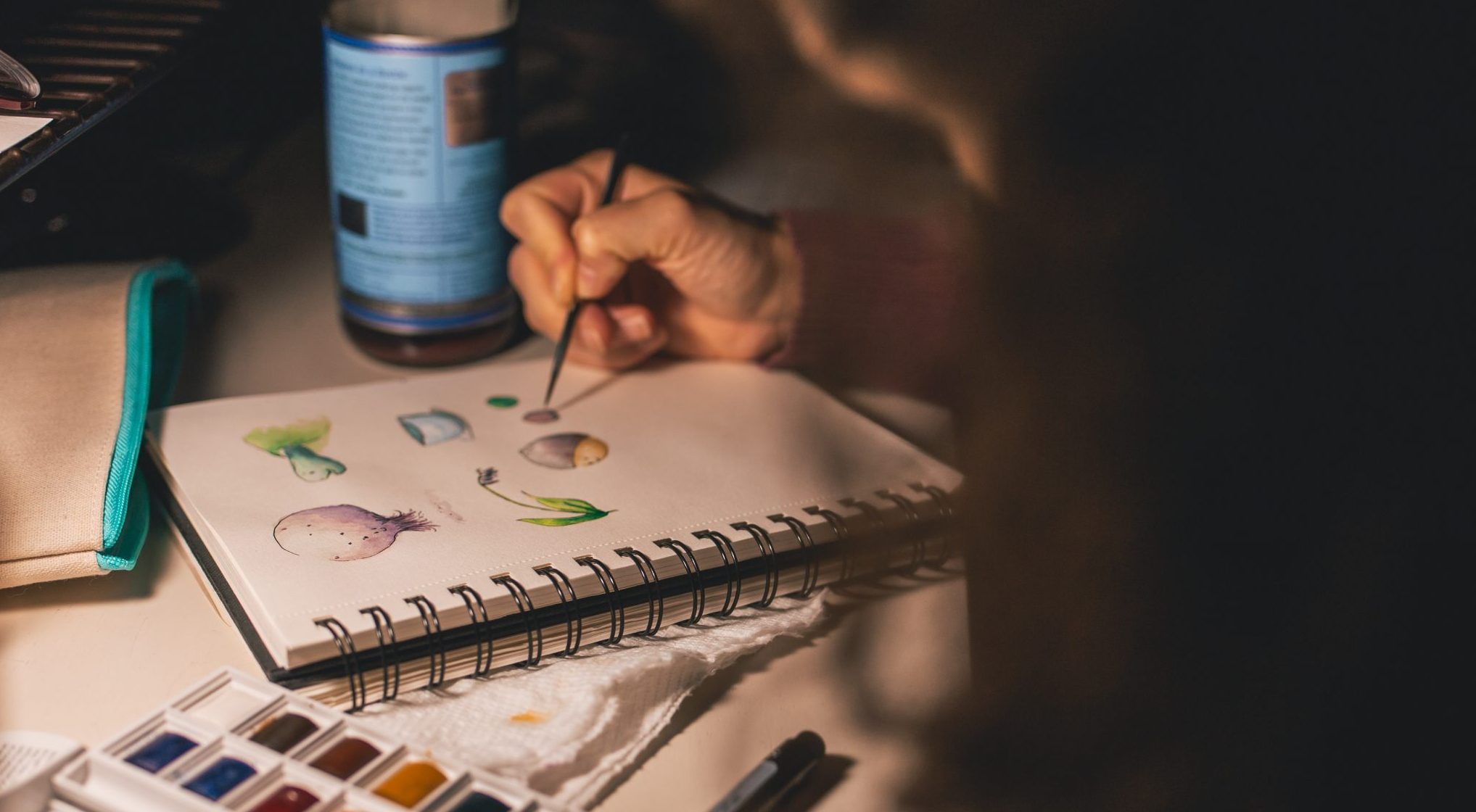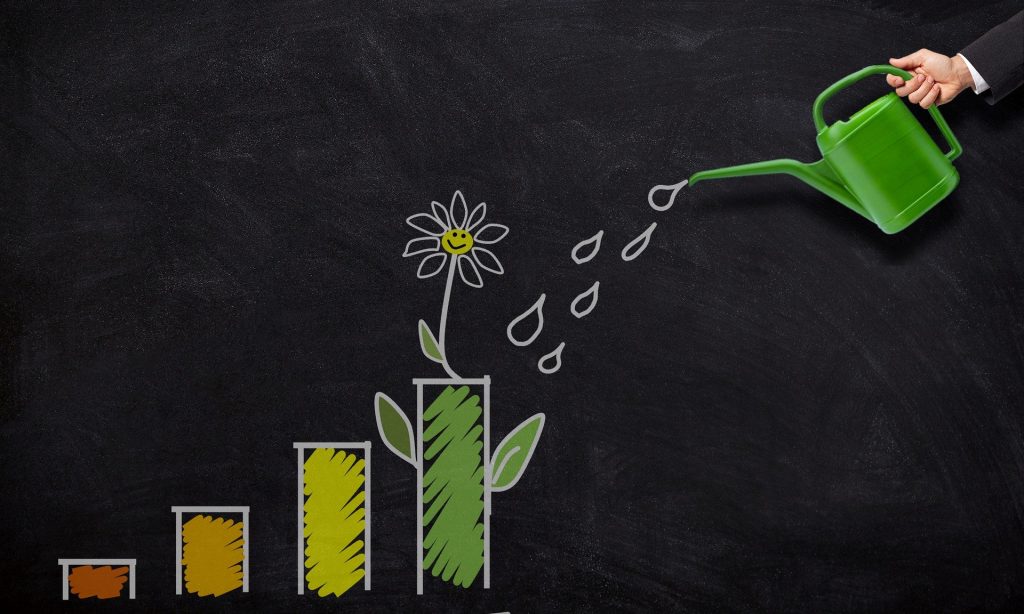With the global pandemic shuttering businesses, art and related enterprises were some of the first and worst to be hit. For artists, who depend on gatherings and venues like museums and galleries that are antithetical to social distancing, it’s not a pretty picture.
Though the economy is struggling and spirits flagging, Safarkhan Art Gallery and others are trying to adapt. “We want to provide something for the community that is positive in these difficult times by giving young artists a chance to exhibit and to have hope for their careers,” says Mona Said, co-owner and operator of the Zamalek gallery, founded in 1968 and the country’s oldest private gallery specializing in modern and contemporary Egyptian art.

Safarkhan’s example is encouraging at a time when opportunities for aspiring artists are few and far between. A handful of galleries and related businesses are raising hopes that Egyptian artists can weather the COVID-19 pandemic while helping us all by producing inspirational and uplifting work.
“We have taken the risk to open a show during the coronavirus pandemic and we never expected the public to receive it so well, “ says Said. “But the quality of the artwork has imposed itself on the people, and just the fact that there is beauty amid this chaos … It is always our mission to offer an escape from social, political and economic hardships.”
In bloom
With 42 pieces from 30 artists across figurative, abstract and sculpture mediums, “Bloom” is Safarkhan’s broadest show ever. Most of all, however, it is a concerted push by the gallery to give as many deserving young artists as possible the springboard and foundational support they need to launch their careers and succeed.
“Bloom,” which runs through mid-August, also offers a holistic reflection of Egypt’s collective identity from pharaonic times to modernity. This is the most diverse show in terms of where the artists come from and the expression of their artworks, says Said. “While the exhibition contains so many divergent art forms, we made sure they all sit well together, are harmonious and complementary.”
Said says this new crop of aspiring artists receives tips and feedback from established contemporary artists like Ibrahim Khatab, Ahmed Saber, Karim Abdel Malak and Hend El Falafly, who also have works in “Bloom.”
In assembling the show, Said says, “Safarkhan concentrated mainly on the quality of the works, making sure to have artists from all over the country represented.”
For the gallery, this exhibition was as much a litmus test as anything else and more than just a collective exhibition. “We wanted to see how it would be received by artists and the public, because if there is adequate support from the public then it encourages the artists and they in turn want to produce,” she says. “Many of these artists do not have the opportunity to sell their works, and therefore the means to buy canvases, paints and so on.”
Said says the exhibition has received coverage from the London-based Al Sharq Al Awsat newspaper and Al Arab of the U.A.E. “because they are surprised we managed to take this initiative during these difficult times and were intrigued as to how and why we did it.”
More than a gallery
Although at first Safarkhan might seem like a modest and limited space for a gallery, it actually lends itself to group exhibitions, creating a sensation of intimacy with the art. “The works are not spaced out to a large degree, thereby losing their meaning and feeling as is the case in some museums or galleries,” says Said. “Our aim is to make the viewer feel engulfed by the works.”
Safarkhan’s uniquely quaint space, punctuated with antique furnishings like ornate woodwork and novelty fittings that are works of art in their own right, makes moving from one painting to another like a film, according to Said. “It embraces the artworks and the viewer in a wonderful form of storytelling, and the common theme is that they all have a passion for their country being expressed in different ways.”
While the illustrious legacy of Safarkhan and its founder Sherwet Shafei are well known for advancing and promoting Egypt’s golden age of modern art (art from the period of the 1860s to the 1970s), her daughter has taken the helm on all matters relating to contemporary art.
Like Shafei, Said sees Safarkhan as a “patron, educator and custodian” responsible for the gallery’s distinct ethos and reputation on the Egyptian arts scene.
Safarkhan supplements regular public exhibitions and private gallery operations with an impressive catalogue of social and charitable endeavors aimed at enhancing the appeal of Egyptian art and improving the conditions and opportunities of aspiring artists to realize their dreams.
“We have always been involved in the community by advancing the cause of Egypt’s young artists in various ways and offering our support to charities and foundations geared to social, medical or economic ends,” says Said.
Safarkhan has collaborated with some of the leading philanthropic organizations in the country, including Tahya Masr, Bulgari Foundation, Magdy Yacoub Foundation and Khairazad. Without discussing details, Said says several exciting partnerships are in the pipeline.
Nourish to flourish
For the mother-daughter ownership duo of Said and Shafei, Safarkhan’s relationship with its artists is a defining feature that sets the gallery apart.
“Our relationship with our artists is unique, it is one-on-one and we are with them every step of the way and they are with us,” says Said. “For us, it is not only about having an exhibition for someone and that’s it. We communicate with our artists throughout the year. We follow up with them, liaise with them and provide guidance for them where needed. It is an intense and personable relationship and something on which we pride ourselves.”
Safarkhan views the gallery-artist relationship as essential for showcasing the best contemporary Egyptian art. The gallery sponsors select young artists by helping to provide the supplies they need to do their work. ”We look for a passion for art, their personal truth within themselves, meaning they are able and willing to express themselves truthfully without being unoriginal or inhibited by themselves or other external factors,” says Said.
“It is not only being individual and unique, but being true to one’s self even if that expression may not come out in the most ‘correct’ or ‘acceptable’ way. So we can detect if an artist has that innate truthfulness, then we can advise him or her on the multiple means and ways by which to express it.”
Said believes the gallery’s exclusivity policy is in the best interests of both the artists and Safarkhan. “For the good of our artists and ourselves, we prefer they do not spread themselves thin across many shows and galleries. From our experience, this ultimately does not reflect well on them or their work.”
Safarkhan conducts an intensive interview process, going through 50 or 60 prospective artists for each one selected, underlining the harsh reality that aspiring young artists face. Yet this is where larger collective shows like “Bloom” can be a real boon for artists trying to gain recognition.
“We work hard with them before introducing them to the public to make sure their first impression is as strong as it can possibly be. Once we exhibit an artist, we genuinely treat them as part of the Safarkhan family, and as sons and daughters under our umbrella,” says Said.
Looking ahead
“We have a few surprises in the pipeline regarding helping to revive the drive with young artists by giving them something to look forward to, even though our current economic situation due to coronavirus is less than favorable,” she says. “We want to give them hope for the future.”
Said cites the return of the Biennale Cairo last summer after a 10-year hiatus and the Youth Salon (Salon el Shabab) as examples of initiatives from the public sector. “The government is already doing a good job in trying to develop and bring back popular and effective initiatives for the arts scene.”
Said points to Salon el Shabab as a perfect example of a successful enterprise to “encourage and promote aspiring contemporary artists.” But she believes such initiatives would benefit from a more diversified and professionally established panel of decision-makers when it comes to selecting artists and works. “A wider selection scope, and a more stringent, tasteful and discerning selection process when it comes to some of the artists they choose to spotlight is needed.” Said suggests a selection panel that changes every year in order to adequately facilitate inclusion and opportunity for as many forms of art and artists as possible.
Safarkhan launched the career of talented Luxor native Ahmed Saber two years ago to widespread acclaim with an almost sold-out debut show, a rarity in the world of galleries. His original brand of semi-surrealist painting and detailed penciling is replete with the symbolism and iconography of his Upper Egyptian roots, focusing on the distinct customs and traditions of these forgotten communities of peasants and rural folk.
Said believes Saber has a promising future. She also points to Sara Tantawy, Yousra Hafad, Kinda Adly and Ghaidaa Ashraf, young women who were featured in last season’s “Blossoming” exhibition, which she views as a fitting prelude to “Bloom.” “We hope they continue their hard and creative work, as they are a great example for aspiring contemporary artists,” says Said.
Upcoming at Safarkhan will be a few surprises in terms of collaborative and charitable work to aid artists. Aside from these, “as always we will be introducing new talents, who we feel have a bright future and, significantly, we will be reintroducing one of the greatest forgotten talents of modern Egyptian art, which promises to be a real treat for all art lovers.”
*****
Safarkhan Art Gallery
6 Brazil St., Zamalek
Tel.: 0227353314
Website: www.safarkhan.com
Email: info@safarkhan.com
Hours: Mon.-Fri., 11 a.m. – 9 p.m.







